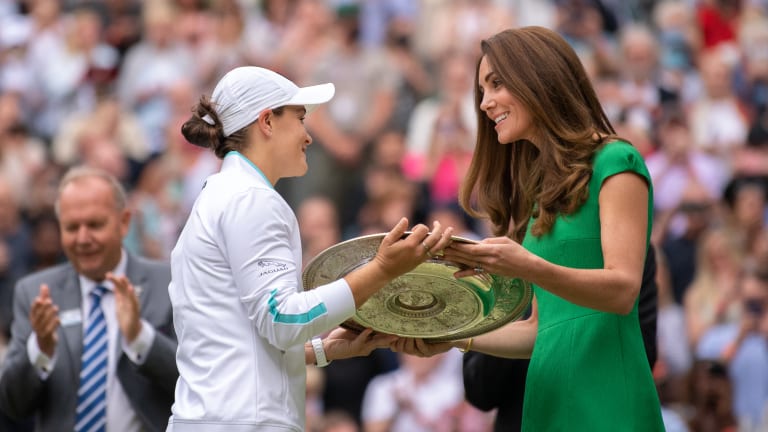Wimbledon
A rich tradition renewed: Ash Barty joins gallery of Australian greats to win Wimbledon
By Jul 10, 2021Wimbledon
Darren Cahill: Jannik Sinner watches more Carlos Alcaraz matches than he does with any other player
By Jul 14, 2025Wimbledon
Jannik Sinner reignites Carlos Alcaraz rivalry with Wimbledon victory
By Jul 14, 2025Wimbledon
Jannik Sinner reversed his usual pattern against Carlos Alcaraz. It won him Wimbledon
By Jul 14, 2025Wimbledon
Veronika Kudermetova and Elise Mertens win women's doubles title at Wimbledon
By Jul 13, 2025Wimbledon
Joy to the World: What Carlos Alcaraz has, and what we are enjoying
By Jul 13, 2025Wimbledon
Iga Swiatek keeps surprising herself after Wimbledon title caps "surreal" turnaround on grass
By Jul 12, 2025Wimbledon
Iga Swiatek wins first Wimbledon, sixth Grand Slam title with 6-0, 6-0 rout of Amanda Anisimova
By Jul 12, 2025Wimbledon
Wimbledon men's final preview: Will Carlos Alcaraz, Jannik Sinner share another epic?
By Jul 12, 2025Wimbledon
Julian Cash, Lloyd Glasspool become first all-British pair to win Wimbledon men's doubles title since 1936
By Jul 12, 2025A rich tradition renewed: Ash Barty joins gallery of Australian greats to win Wimbledon
“She doesn’t worry at all. She just goes out there and plays,” Rod Laver told TENNIS.com after the world No. 1 defeated Karolina Pliskova in Saturday's final at the All England Club.
Published Jul 10, 2021
Advertising
Advertising

Barty won the first three-set ladies' final at the All England Club in nine years.
© 2021 Getty Images
Advertising

A royal handoff: Barty received the Venus Rosewater Dish from Catherine, Duchess of Cambridge.
© FREE FOR EDITORIAL USE. This image is offered licence free for editorial use only by the AELTC. It can be published on all platforms and can be archived. Copyright of All England Lawn Tennis Club. Commercial use is prohibited. ©AELTC/Ben Solomon